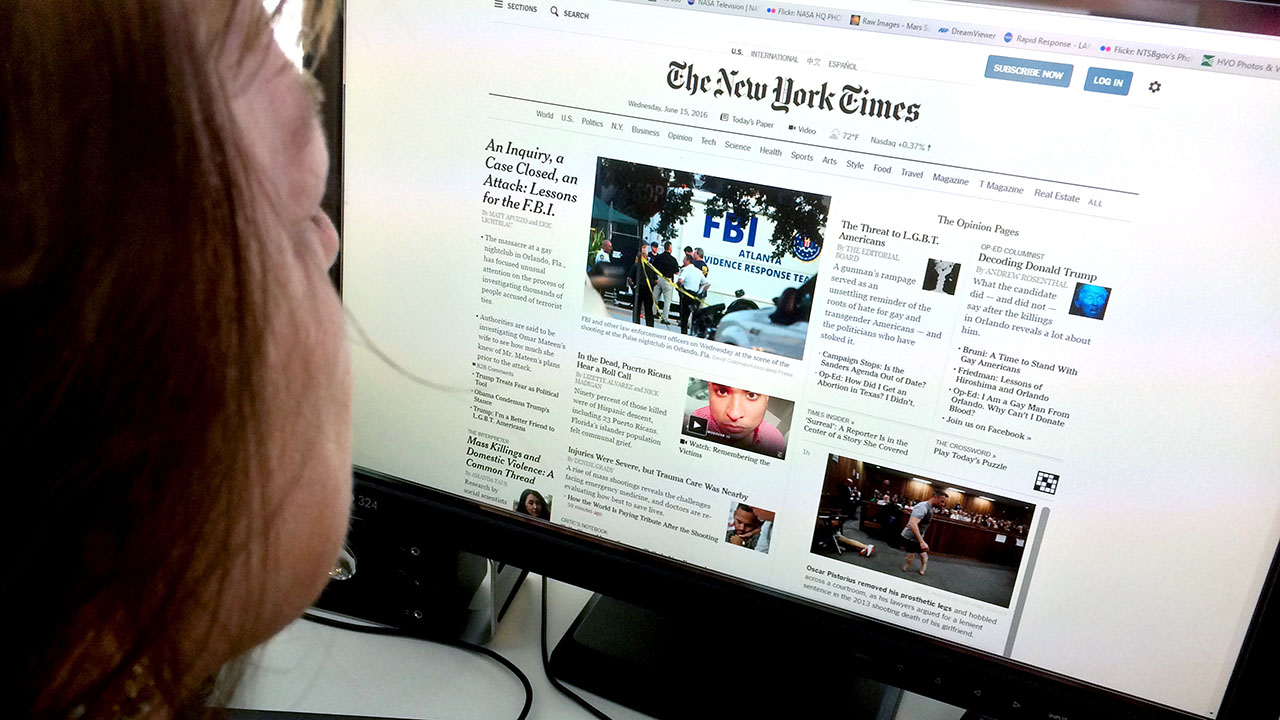DW News Unique Reports on Environmental and Climate Concerns
DW News Unique Reports on Environmental and Climate Concerns
Blog Article
The Evolution of Journalism in the Age of News Online
In the swiftly altering landscape of journalism, the electronic age has actually introduced a brand-new age where the immediacy of on the internet information reshapes both its production and intake. As electronic platforms proliferate, they improve interactivity and expand the reach of journalism, yet all at once test standard standards with the quick spread of details and misinformation alike. The rise of resident journalists and independent voices further complicates the story, adding to a lively yet perilous media environment. As we browse these complexities, one have to wonder about the future of journalistic stability and just how it can be safeguarded in the middle of these transformative adjustments.

Increase of Digital News Platforms
The rise of digital information platforms has actually essentially changed the landscape of journalism, noting a change from typical print media to dynamic, on the internet areas. This evolution was driven by innovations in innovation and the raising access of the internet, which enabled information to be distributed quickly and generally. Unlike their print equivalents, electronic systems can instantaneously upgrade content, giving real-time news protection and analysis that interest the modern-day reader's need for immediacy and relevance.
Digital systems have actually additionally expanded the extent of journalism, allowing a diversity of voices and point of views. With lower obstacles to entry, independent reporters and smaller wire service can reach global target markets, testing the monopoly once held by established media empires. This democratization of news has improved the general public discussion, using differed narratives and catering to niche interests that were previously underserved.
Furthermore, the combination of multimedia aspects such as video clip, sound, and interactive graphics boosts narration, making news more interesting and easily accessible (dw news). This multimedia approach not just brings in a broader target market yet likewise help in the comprehension of complicated stories. Fundamentally, digital platforms have redefined journalism, promoting development and versatility in an ever-evolving media atmosphere

Effect of Social Media Site
Social network platforms have actually additionally reinvented journalism by modifying exactly how information is consumed and shared. These systems have democratized news dissemination, making it possible for any individual with net accessibility to report events in real-time. This immediacy has placed traditional information electrical outlets in a race to maintain, compelling them to adopt quicker reporting methods. Furthermore, social media has actually expanded audiences, providing reporters accessibility to global viewership beyond geographical constraints.

The interactive nature of social media sites fosters interaction, permitting audiences to take part in discussions, share point of views, and add to information narratives. This interaction enhances the dynamic in between reporters and their audiences, promoting a much more participatory kind of journalism. However, this also positions immense stress on reporters to produce content that reverberates with target markets, usually focusing on sensationalism to capture focus.
Furthermore, social media systems have actually come to be essential tools for journalists to resource stories, assess public viewpoint, and network with market peers. The reliance on social media likewise necessitates a vital evaluation of sources to ensure the integrity of information shared.
Challenges of False Information
Among the electronic revolution of journalism, one substantial difficulty is the prevalent spread of false information. In an era where info is plentiful and swiftly easily accessible, identifying in between credible news and fabricated web content has actually ended up being progressively challenging. The sheer volume of details distributed across various online systems usually blurs the line in between truth and fiction, positioning a considerable risk to the stability of journalism.
Misinformation can spread rapidly via social media sites, where formulas prioritize engagement over precision, inadvertently amplifying false stories (dw news). This not only undermines public rely on like this media organizations however likewise cultivates an atmosphere where misleading web content can influence popular opinion and decision-making processes. The difficulty for reporters is twofold: to unmask fallacies efficiently and to maintain rigorous criteria of fact-checking and verification
Additional complicating this problem is the presence of deepfakes and innovative disinformation campaigns that leverage progressed innovations to develop misleading web content equivalent from legitimate reporting. As these modern technologies progress, so should the strategies and tools used by reporters to fight them. Attending to misinformation needs partnership in between media organizations, innovation companies, and policymakers to establish detailed techniques that guard the credibility of details in the digital age.
Function of Person Journalists
Navigating the landscape of false information highlights the transformative effect of citizen reporters within the electronic world. As typical media outlets grapple with the sheer speed and quantity of information dissemination online, resident reporters-- normal people armed with smart devices and accessibility to social networks-- are playing a progressively crucial function. These grassroots factors have ended up being instrumental in covering events quickly, typically giving real-time updates from the ground prior to mainstream media can respond.
Citizen reporters have democratized news coverage, enhancing voices that may otherwise remain unheard. By leveraging systems like Twitter, Facebook, and Instagram, they offer diverse perspectives that challenge the stories regularly pressed by developed media.
However, resident journalism is reshaping the media landscape, compelling typical electrical outlets to adjust by incorporating user-generated material into their reporting. By cultivating area involvement and motivating participatory journalism, these digital storytellers add to an extra inclusive and dynamic information ecosystem. As person reporters remain to develop, their role in shaping public discussion stays a necessary element of modern journalism.

Future of Journalistic Stability
As the electronic age proceeds to progress, the future of journalistic honesty encounters extraordinary obstacles and opportunities. The proliferation of digital systems has actually equalized details circulation, making it possible for a bigger series of voices to add to the information landscape. Nevertheless, this has actually likewise caused the spread of misinformation and the erosion of count on in media. In this atmosphere, preserving journalistic stability ends up being vital, calling for adherence to strenuous moral criteria and fact-checking procedures.
The surge of expert system and algorithm-driven material curation better makes complex the landscape. While AI can improve reporting by assessing substantial datasets and identifying trends, it likewise poses risks of predisposition and adjustment. Journalists have to consequently stay vigilant, guaranteeing that technology acts as a tool for fact instead of distortion.
Furthermore, the economic pressures on standard media outlets demand innovative business versions to maintain quality journalism. Subscription-based models, not-for-profit funding, and collaborations with technology companies are emerging as possible services. Yet, they must be sought without jeopardizing editorial freedom.
Eventually, the future of journalistic integrity relies more tips here on the commitment of media and journalists companies to maintain transparency, responsibility, and a steadfast devotion to reality, among a quickly changing electronic world.
Final Thought
The evolution of journalism in the electronic age provides both challenges and possibilities. The surge of digital information platforms and social media has actually equalized info dissemination, encouraging a diverse variety of voices, including person journalists. Nonetheless, these improvements necessitate alert initiatives to deal with misinformation and maintain journalistic stability. The future of journalism depends upon the capability to adjust ingenious business designs that maintain top quality reporting while preserving the trustworthiness and trust fund vital for informed public discourse.
The increase of digital information systems has actually fundamentally transformed the landscape of journalism, marking a shift from typical print media to dynamic, online spaces. With lower barriers to entry, independent journalists and smaller news organizations can reach global audiences, challenging the monopoly once held by established media conglomerates.Social media platforms have even more changed journalism by modifying how news is taken in and shared. As typical media electrical outlets grapple with the large speed and volume of news dissemination online, person journalists-- ordinary individuals armed with smart devices and accessibility to social media-- are playing a significantly crucial duty. The surge of electronic see this news platforms and social media has democratized details circulation, empowering a diverse array of voices, including person reporters.
Report this page